Work on a radically new tank often results in the creation of intermediate vehicles. This exact thing happened with Soviet medium tanks in WW2. Several attempts were made to replace the T-34 with modernized vehicles. The first attempt was called T-34M, later the T-43 took a shot at the reigning champion. The results were similar: neither tank replaced the T-34. The first Soviet new generation medium tank, the T-44, travelled a long way and changed a lot before it entered production.
From evolution to revolution
One of the reasons for the T-43's failure was the desire to reuse components from the T-34. This approach had its upsides, as it would take much less time to put it into mass production. On the other hand, this led to a long delay in the development of the first variant and ended up dragging the second to its death. The tank was heavier than the T-34, which already weighed more than 30 tons, and this would inevitably result in issues with the running gear. The increase in protection also lagged behind expectations. Requirements increased after the Battle of Kursk, and the new T-43 would have to weigh 35-36 tons. The driver's hatch also made a comeback, weakening the upper front hull armour. Further development of the T-43 was pointless.
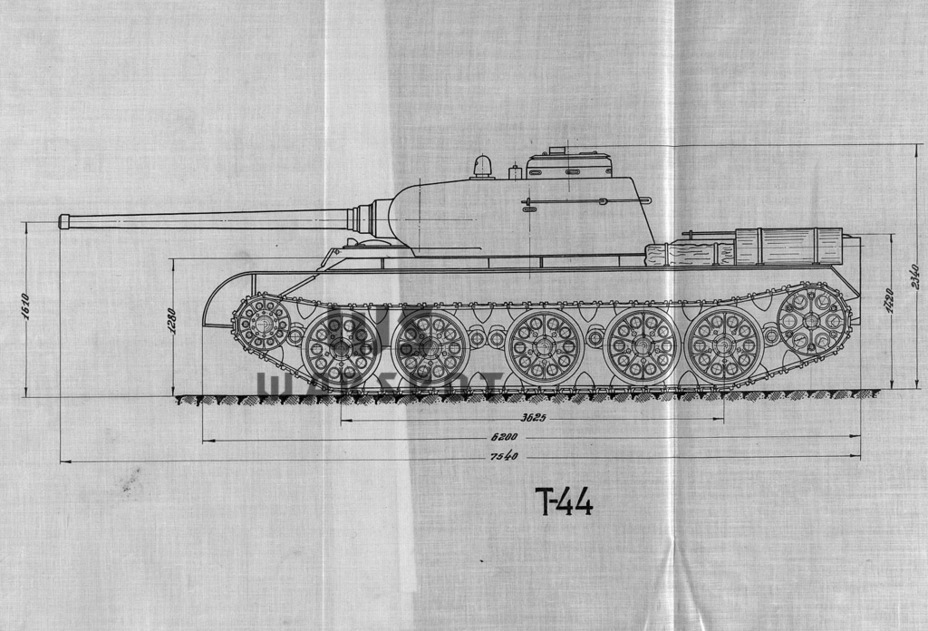
The KB-520 design bureau at factory #183 understood this perfectly. Seeing that the work on the T-43 is hitting a dead end, the group headed by A.A. Morozov began working on a different vehicle. It was clear that attempts to reuse parts always ended badly and that something new is needed. The existing hull layout was also an impediment. A long engine compartment led to a shorter fighting compartment compared to tanks with transmissions in the front.
The German Panther Ausf.D tank first seen at Kursk in July of 1943 also offered some food for thought. This tank was studied in detail by Soviet specialists, including those from factory #183. Of course, the tank was 1.5 heavier than Soviet tanks, but some solutions were quite interesting. Unlike Soviet tanks, which had turrets shifted to the front, the Panther had its turret closer to the center, which made it a more stable firing platform. The Panther also didn't have issues with hatches in the roof of the hull, which was an issue on the T-34. On the other hand, these advantages came at a cost. The German tank was much taller and heavier, and the frontal transmission introduced a lot of problems with maintenance and installation.
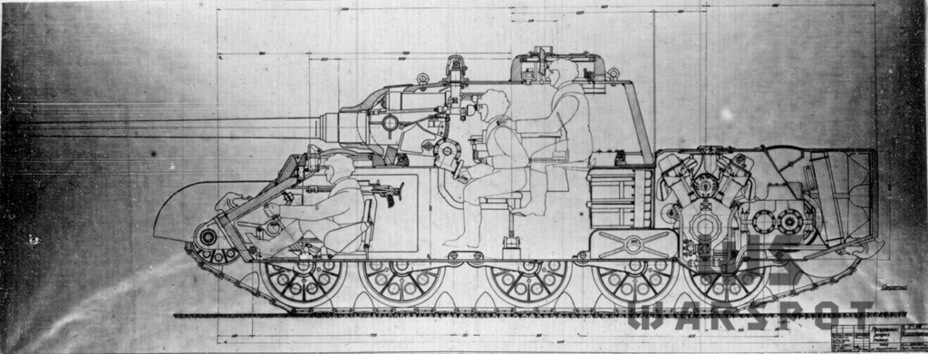
KB-520 had two options: lengthen the fighting compartment and create a heavier tank, or reduce the size of the engine compartment. Ultimately, the latter was chosen. The only way to achieve this was to place the engine perpendicularly to the hull. This solution was not new, as the MS-1 tank already had a perpendicular engine. However, in this tank's case it had a specially designed engine that had a gearbox as a part of the same assembly. KB-520 couldn't pull the same trick. The engine was already chosen, as there was no alternative to the V-2. A complex linkage between the engine and gearbox was inevitable, and yet this was the correct decision.
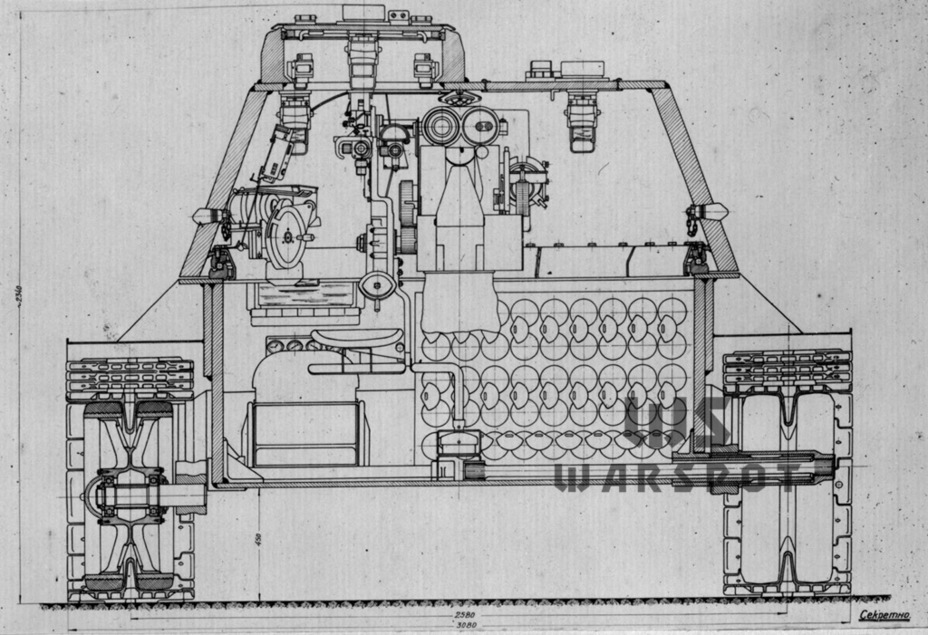
In November of 1943 a draft project for the T-44 medium tank arrived on the desk of V.A. Malyshev, People's Commissar of Tank Production. The attached memo explained that the development of the T-44 was driven by the goal of expanding the fighting compartment without exceeding the weight of 30 tons. According to the memo, the perpendicular placement of the engine and a small widening of the hull allowed the vehicle to carry a turret on an 1800 mm turret ring. The height of the hull was also decreased. The driver was placed in a special cabin with a hatch above him. A periscopic device in this hatch improved visibility. The tank also turned out to be much lower than not only the Panther, but also the T-34.
Three in one
On November 22nd, 1943, Malyshev signed NKTP order #705ss «On building an experimental prototype of the T-44 tank designed at factory #183». This order came as a result of Malyshev's review and approval of the draft project. In addition to the project, factory #183 presented a model of the vehicle. The order permitted factory #183 to produce two prototypes with a due date of February 1st, 1944.
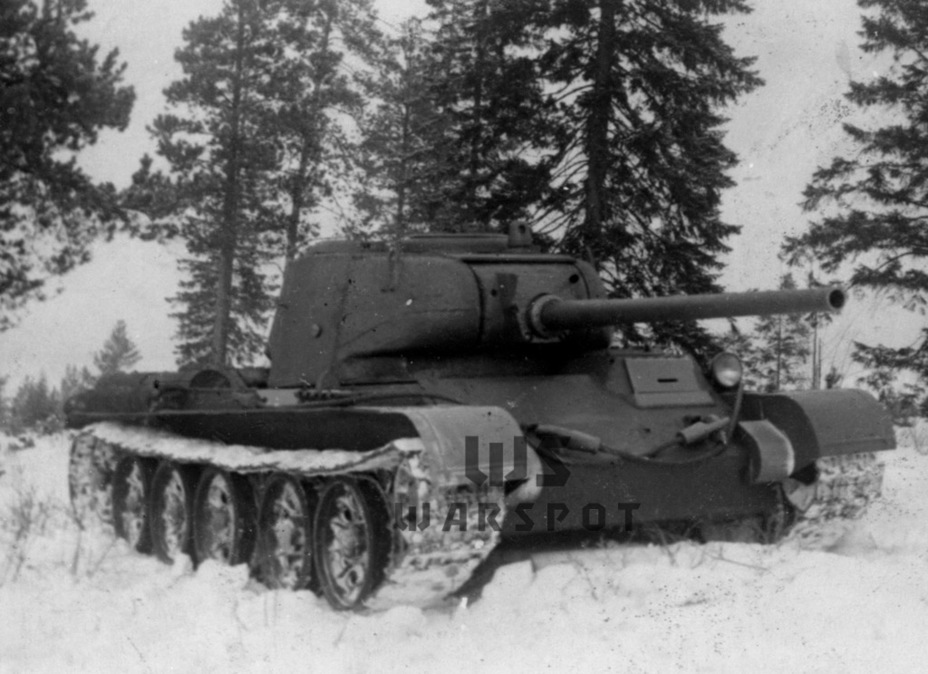
The order also stated that it was necessary to improve the design before producing it. The turret was made out of rolled steel, which raised some concerns from the point of view of manufacturing. The rear of the hull also had to be changed. A bulge was created since the V-2 was too tall for the hull. A special variant of the V-2 would be developed where the water and oil pumps would be moved from the lower part of the casing to the sides. The order also included some additional tasks for KB-520 including the development of an AA machine gun on the commander's cupola and the removal of the fuel tank from the front of the hull.
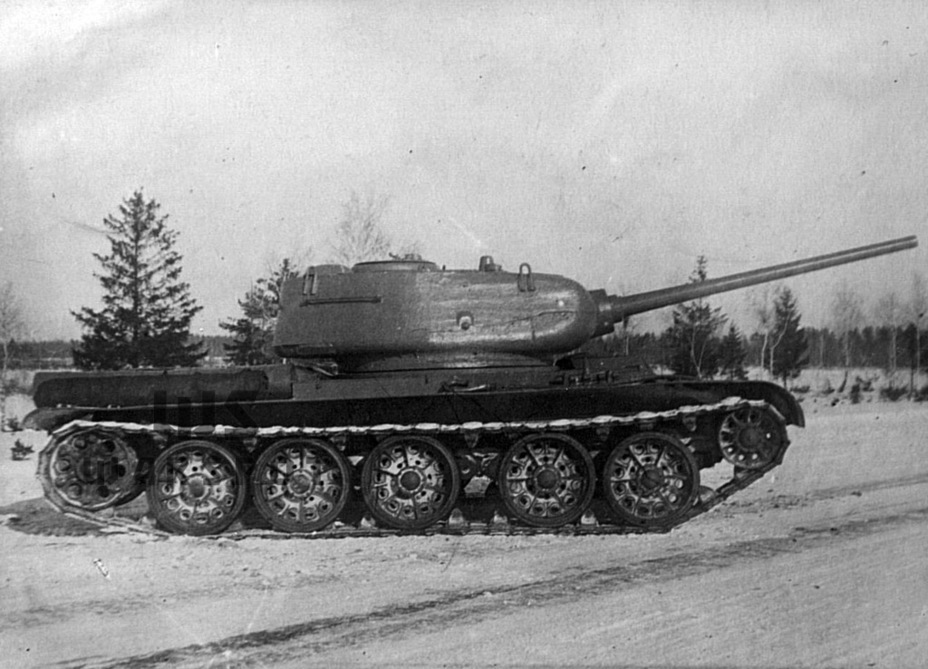
A week later, on November 27th, 1943, the GBTU prepared tactical-technical requirements for a medium tank. The type was not mentioned, but it was clearly the T-44. The GBTU had its own vision for it. The requirements listed a 90 mm thick upper front hull plate and 110 mm thick turret front. A GVG (SG-43) machine gun would be used instead of the DT, and a DShK AA machine gun would also be used. The V-2-IS 520 hp engine would be used with a 5-6 planetary gearbox with a two-stage planetary turning mechanism. A pinwheel would be used for the drive sprocket rather than a cage gear.
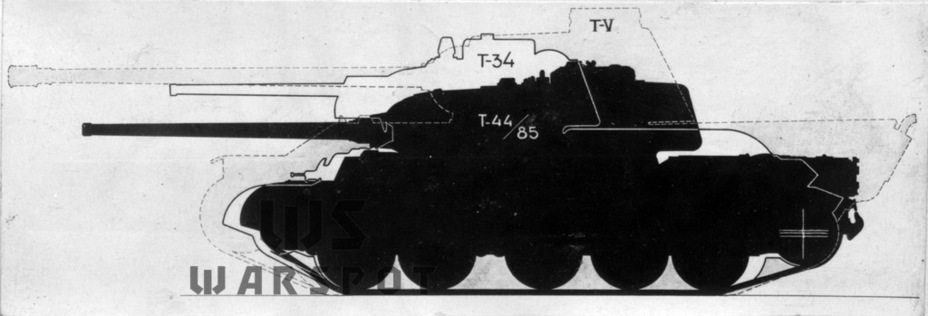
Not every request listed in order #705ss and the GBTU's requirements was worked on. For instance, the NKTP and GBTU required a planetary transmission. Morozov managed to defend the existing 5-speed mechanical gearbox. It would have to be reworked due to the changing layout, but it was a smaller issue than the planetary gearbox that was being worked on for over a year. A number of other requirements were also ignored, such as the armour thickness and AA gun. The idea to install a GVG machine gun was also rejected. Of course, a belt fed machine gun would be nice to have, but it would have to be accepted into service first. The T-44 still used the mass produced DT.
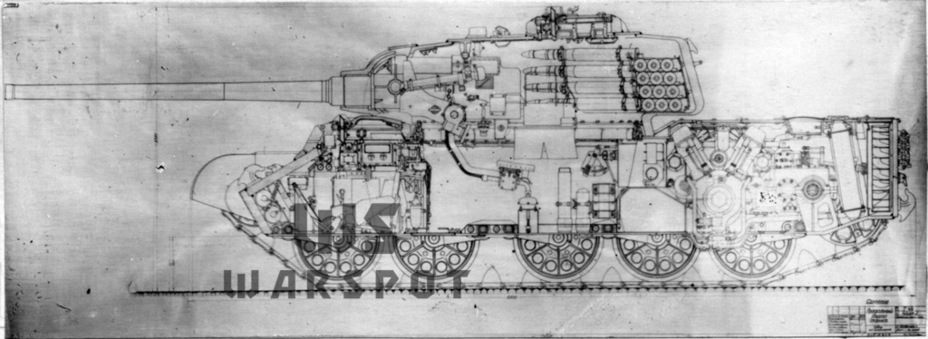
Stalin was very interested in this tank. He rejected the T-34M in the summer of 1942, remarking that a new tank should not be rushed, but the T-44 elicited a different reaction. According to Malyshev's diary, Stalin first learned about the T-44 during a presentation on December 27th, 1943. Factory #183 had already started working on the prototypes by then. Stalin carefully listened to the presentation and ordered that assembly and trials should be completed as quickly as possible. Later, he often asked about the state of the project. Such a degree of interest is easy to explain. The T-34-85 was put into production in January of 1944, but this tank was a half-measure. A new medium tank with more armour and modernization potential was needed. At a meeting held on February 13th, 1944, Stalin proposed expediting T-44 trials and beginning mass production as soon as possible.
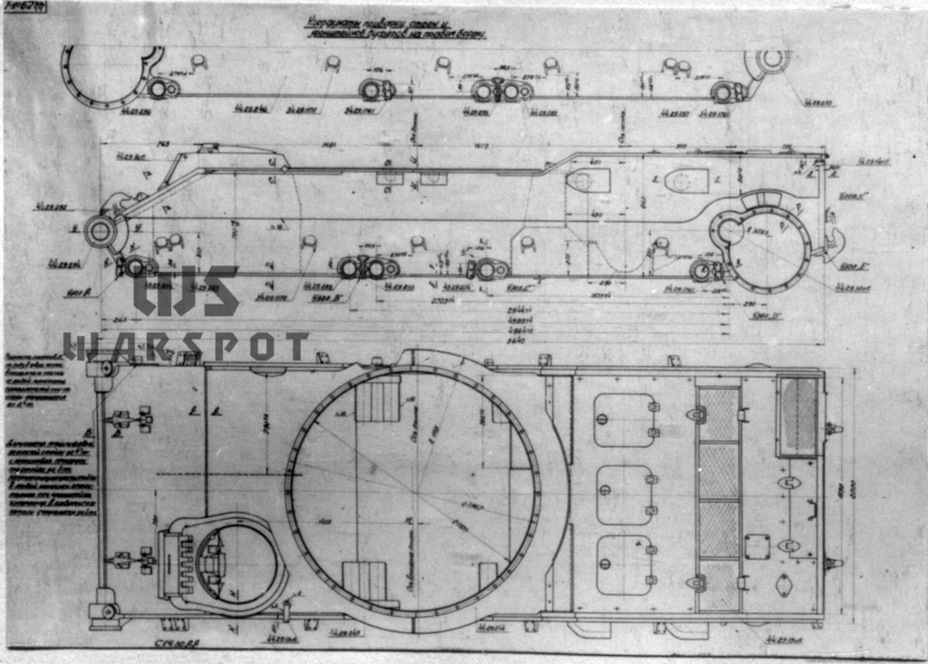
The initial plan called for two different turrets for the prototypes. The first tank received an 1800 mm turret ring and an 85 mm D-5T gun. The second prototype received the same gun, but with only a 1600 mm wide turret ring. The first prototype's turret was reminiscent of the draft project, but KB-520 introduced many changes, including the type of armour. The turret was now cast with a welded on roof. The use of casting allowed for the creation of a complex shape, for instance the slopes of the left and right sides of the turret were different. The design was similar to the turret of the second variant of the T-43, but with sloped sides. A large indentation was added to the front, as otherwise the turret would cover up the driver's hatch in certain positions.
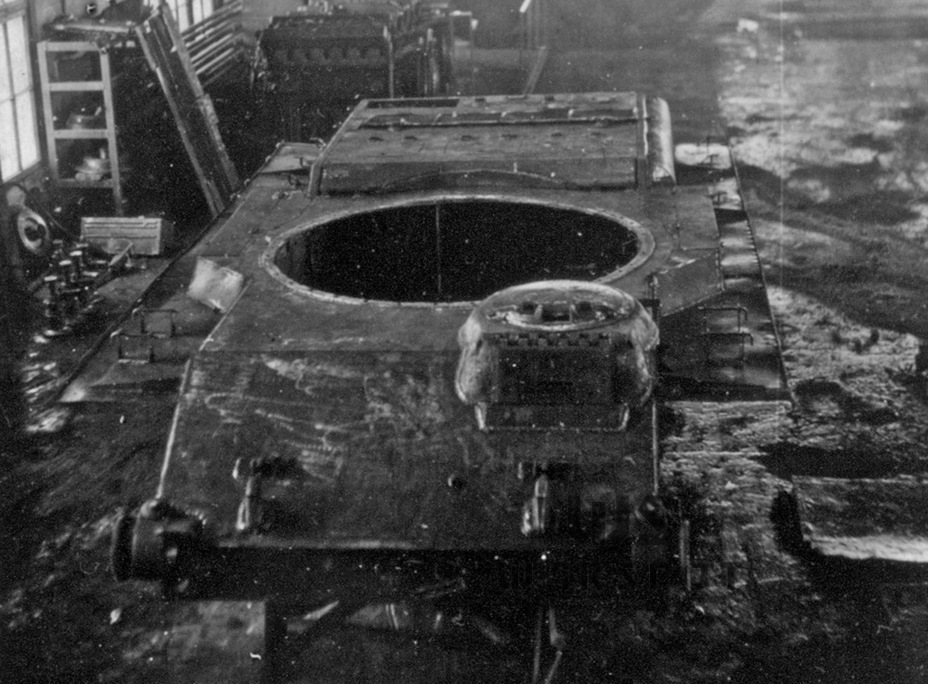
The turret with a 1600 mm wide turret ring was not an accident. One of the reasons was that an 1800 mm turret ring would need new tools, and therefore more time to set up. A 1600 mm turret ring was already being built for the T-34-85. The turret with a smaller turret ring was also lighter. The design was also similar to the T-43's turret. The pistol ports were done similarly and the sloping of the armour was close. The lower part of the turret was also lifted due to the presence of the driver's cabin. As with the first variant, this increased the odds of enemy shells hitting the turret ring or ricocheting into the roof of the driver's compartment.
Finally, third variant of the turret was developed by February of 1944. Some sources state that this turret was installed on the second prototype, but this was not the case. As the GBTU's historical summary states, Malyshev ordered the production of a third T-44 prototype in February of 1944. This tank was the same as the first prototype, but mounted a 122 mm D-25-44 gun instead of the D-5T. This gun had a 2-4% weaker propellant charge than the D-25T combined with smaller and lighter recoil elements. A single piece round was developed. The installation was not a problem as the first turret variant was developed with room to spare. The appearance of the D-25 was caused in part by trials against the Panther and Ferdinand. The 85 mm D-5T couldn't penetrate the upper front plate of a Panther from any range, while the D-25 had no issues with it.
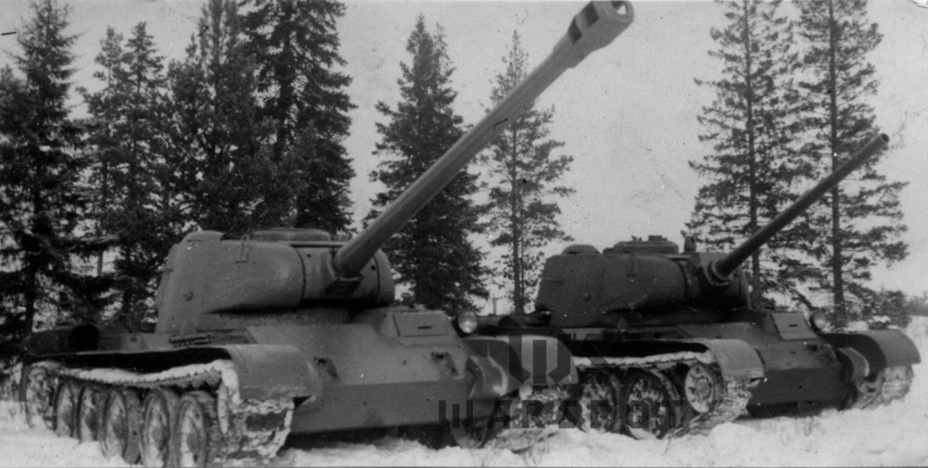
The ammunition storage also changed during the improvement process. Initially all 54 85 mm rounds were stored in one rack in the front of the hull. This solution was more comfortable than having them located on the floor of the fighting compartment, but not ideal. A new arrangement was introduced. 4 rounds were carried in the ready rack on the right side of the turret (like in the T-34-85 tank), 5 more on the left side. 12 more rounds were carried in the turret bustle. The amount of ammunition in the front of the hull was reduced to 33. The DT magazine capacity increased to 44. The ammunition capacity of the third variant was lower: only 24 rounds.
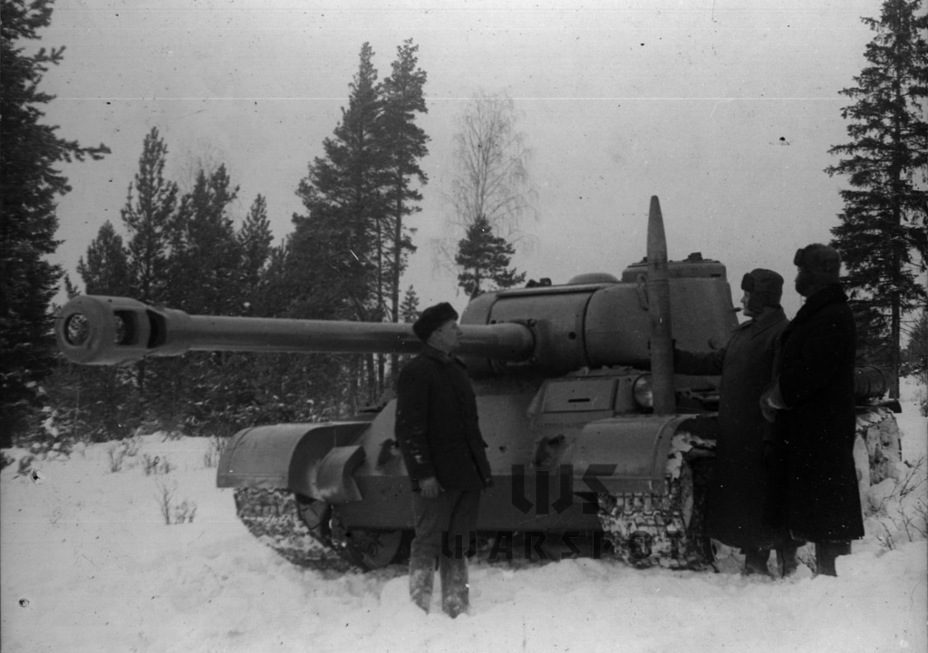
The chassis of all three prototypes was identical. The hull did not change compared to the draft project. KB-520 primarily set the goal of resisting the 75 mm Pak 40, the most common anti-tank weapon in the German army at the time. The turret front was much less resistant. It was estimated that the Pak 40 could penetrate it at a range of 1400 meters or closer. The vertical sides were 45 mm thick with 30 mm thick applique armour welded on in the upper portion. The total thickness of the upper sides was 75 mm. The hull was very low: only 830 mm tall in the front and 965 mm tall in the rear. The driver's cabin remained.
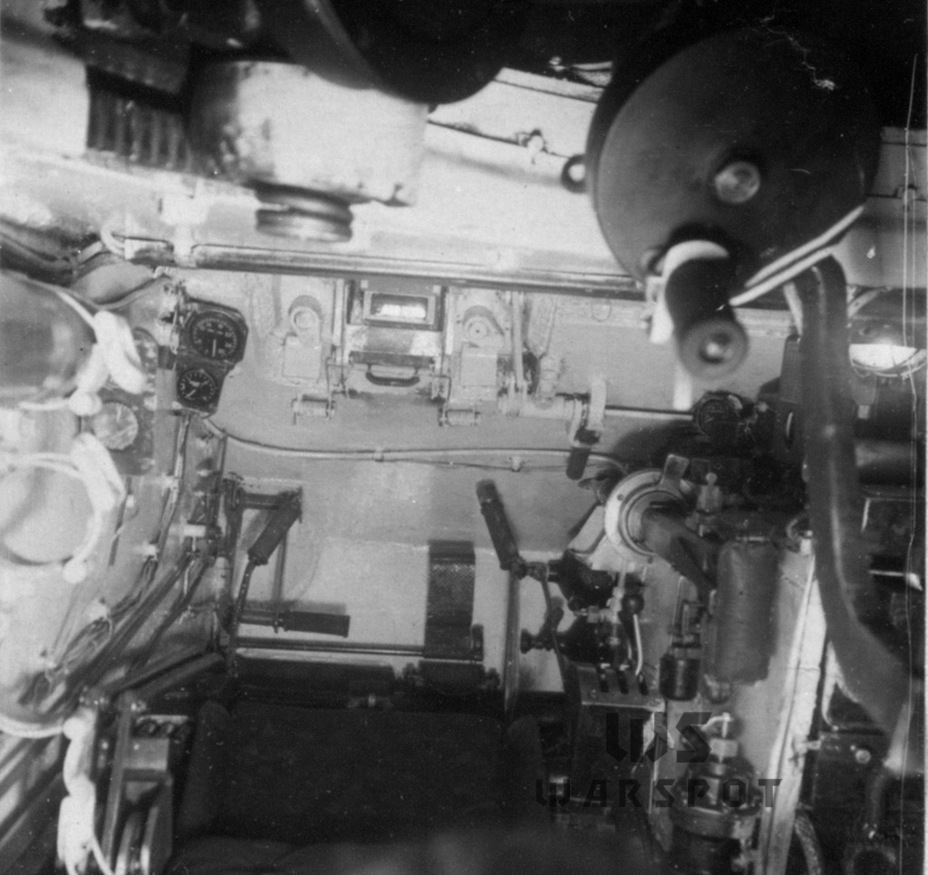
Despite Malyshev's requirement to change the engine, factory #75 (Chelyabinsk) delivered ordinary V-2-IS engines, ensuring that the bulge in the engine compartment floor remained. Nothing was done with the rear plate. It was still vertical and vulnerable to nearly any anti-tank weapon. The engine cooling system remained the same. The fuel system was changed, however. Three fuel tanks with a total capacity of 420 L were placed in two compartment between the engine and fighting compartments. Unlike the later variants of the T-44, there were two exhaust pipes. Both pipes were located on the left side and vented the exhaust backwards.
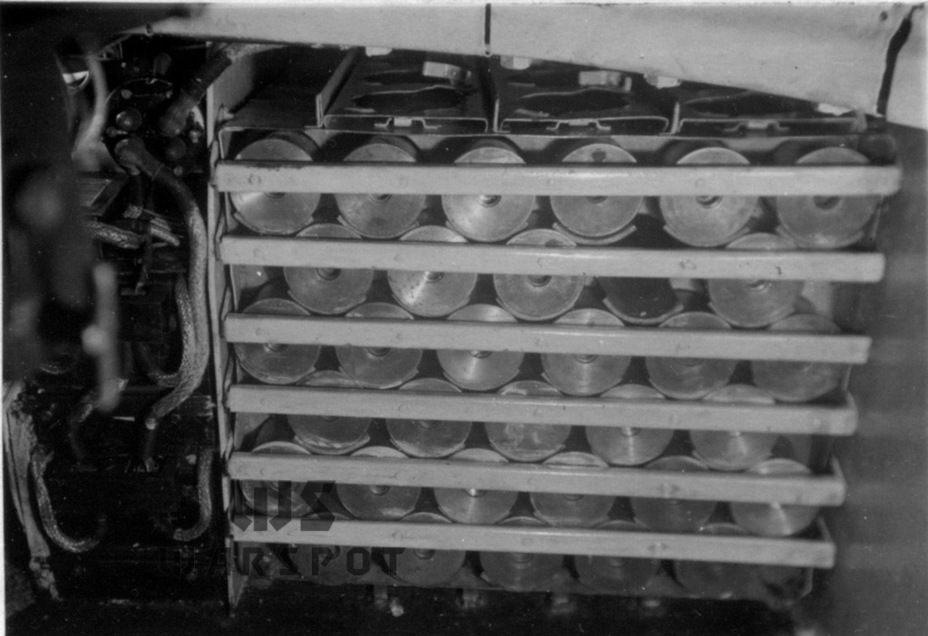
The transmission layout also didn't change much. The engine's torque was transmitted to a gear train, then to the 3-stage 5-speed gearbox through the main clutch. Despite the military's request to use a planetary turning mechanism, the T-44 kept the friction clutches, but unlike the T-34 they were installed on the final drive shafts. This design was conservative, but aimed at reducing risks and creating a reliable system.
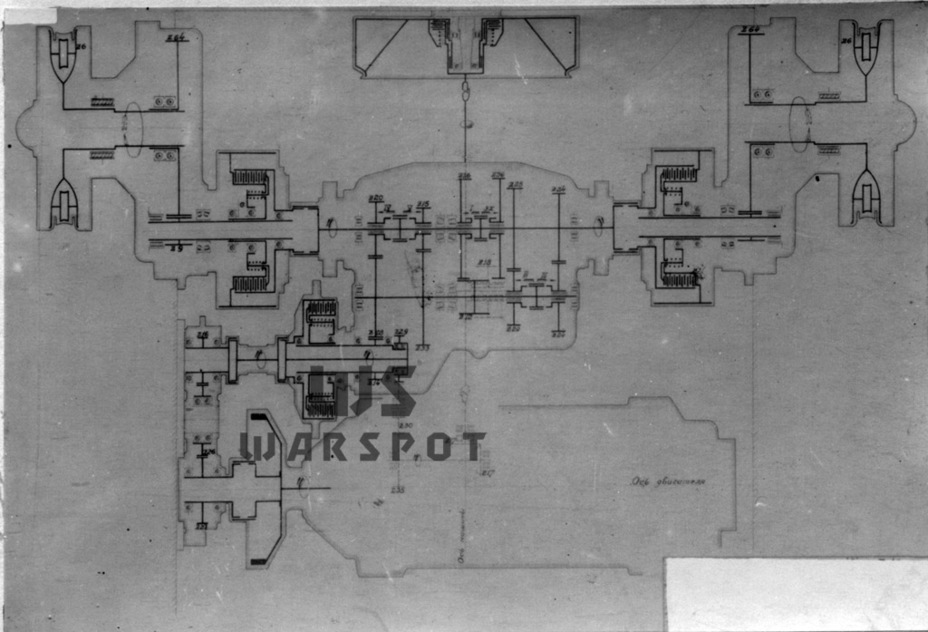
The running gear was not revolutionary either, but only the track links remained the same as the T-34. The road wheel diameter was reduced from 830 to 780 mm. The idlers shrank from 600 to 500 mm. The drive sprockets increased in size, from 634 to 650 mm. The suspension was changed radically. The T-43 had suspension arms similar to those used on the T-34, the T-44 grouped its second and third road wheel torsion bars underneath the turret. This resulted in a more even weight distribution in the heaviest part of the tank. The torsion bars of the last set of road wheels were pushed as far back as possible, in part due to the placement of the engine.
Revolutionary, but not ideal
The assembly of the first two T-44 prototypes was finished towards the end of January, 1944. The prototype with an 1800 mm wide turret ring and a D-5T gun entered trials first. Weighing showed that the tank weighed 30,400 kg, or nearly half a ton more than expected. Nevertheless, this was still a ton less than a production T-34-76. The second prototype with a 1600 mm wide turret ring was not weighed.
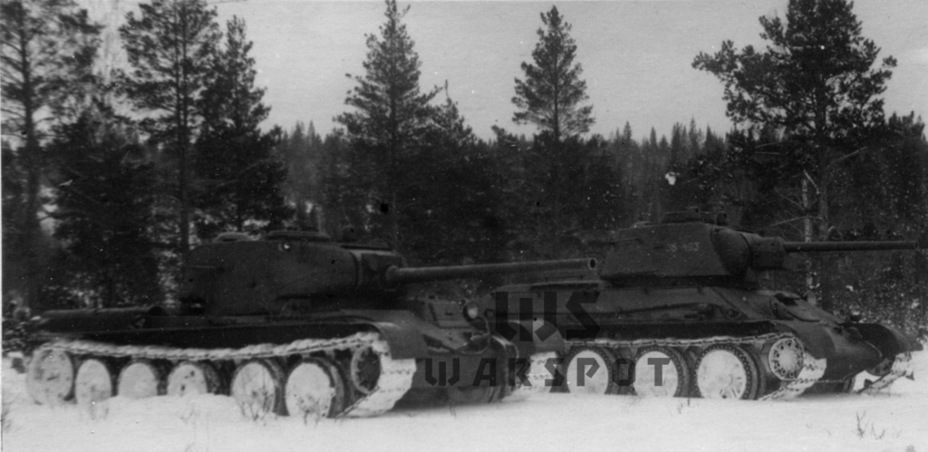
The T-44 tank travelled for 590 km in the first set of trials. A production T-34 accompanied it to serve as a comparison. The tank drove for 240 km on January 25th with an average speed of 21.8 kph and 250 km on January 27th with an average speed of 24.4 kph. The T-34's average speed in these conditions was 20 and 23 kph respectively. The T-44 consumed an average of 220-227 L per 100 km compared to the T-34's 230-332. The tank was more or less reliable during the test ran barring some minor difficulties. The exhaust system headed up the left side of the hull when it was running. The driver's observation port also opened on its own. Excessive wear of the final drive clutch driving gears was found. This was due to a manufacturing defect.
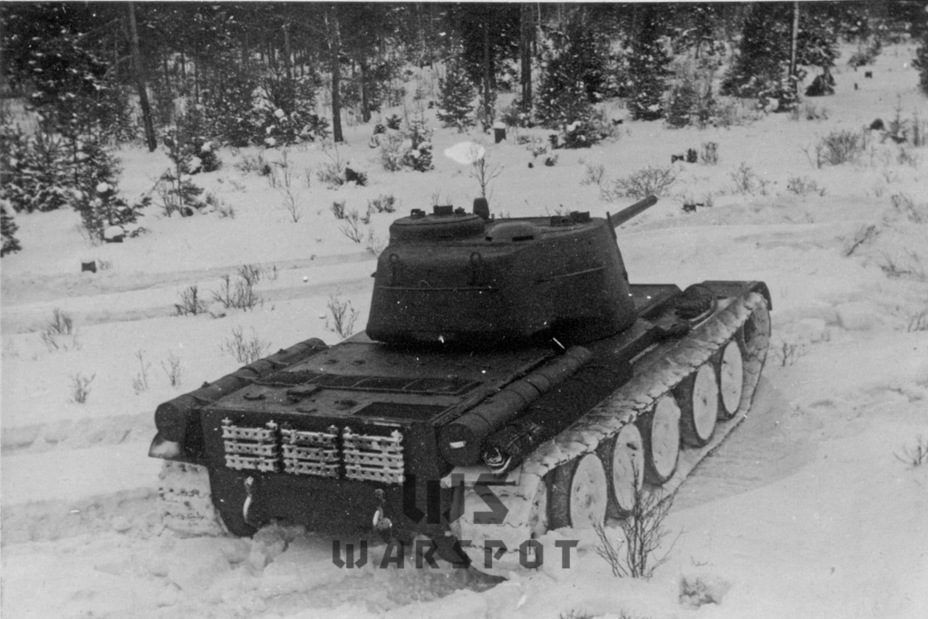
Trials showed not just a higher speed and better fuel economy, but also a reduction of the effort required to steer the tank. The T-34 took 20-24 kg of effort to steer, the prototype T-44 took only 13-16 kg. There was also a marked improvement in observation, especially from the driver's point of view. Gunnery trials were also successful. The crew made 12 shots in 95 seconds with the turret in different positions. In theory, this was equal to a rate of fire of 8-10 RPM. Gunnery trials also established that the concentration of fumes was not excessive. The second prototype also successfully completed trials in the volume of 231 km. As for the third prototype, the one with an 1800 mm turret ring and a 122 mm gun, it covered the largest distance in trials: 2340 km. An average speed of 24 kph and fuel expenditure of 210 L per 100 km were recorded.

In February of 1944 the first T-44 prototype was sent to Moscow to be shown to the top brass. The second prototype was sent to Kubinka. The third tank remained at factory #183 for mobility trials. Unlike these trials, gunnery trials were not as successful. The rate of fire was only 2-3 RPM, which was tolerable for the IS-2 tank and ISU-122 SPG, but was insufficient for a medium tank. The ammunition capacity was also low. The decision to abandon the idea of installing the D-25 gun into the turret of the T-44 tank was made in the spring of 1944.
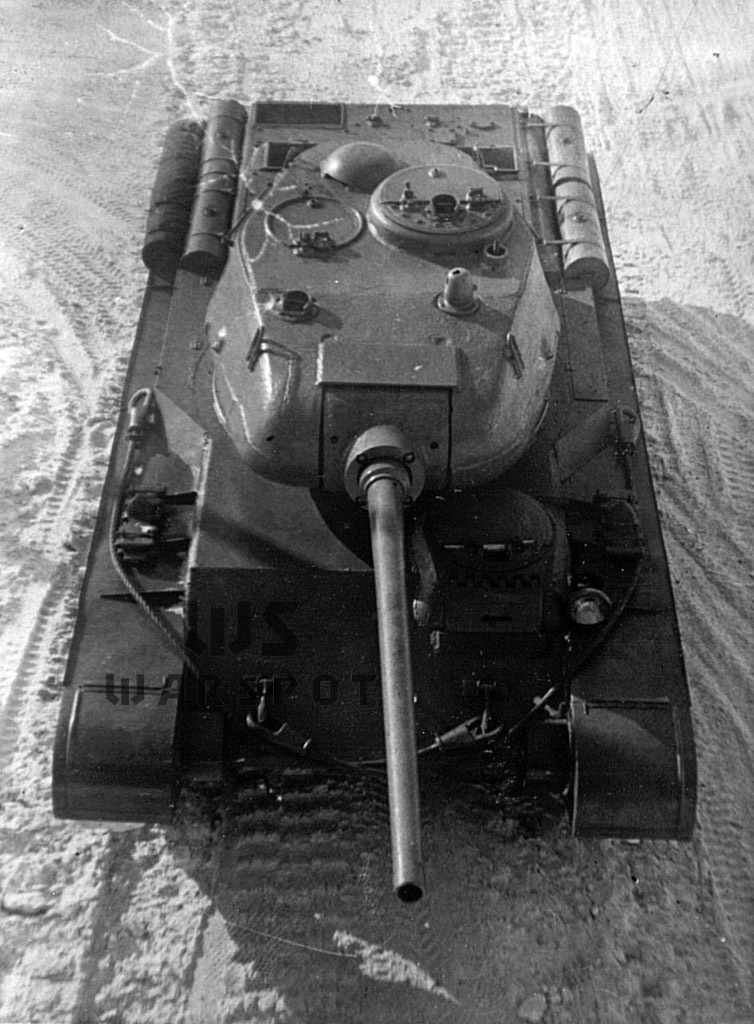
The T-44 tank that arrived at the NIBT proving grounds had already travelled for 300 km. Unlike the T-43, which died in part due to delays with trials, the T-44 didn't have to wait for long. An order from the NKTP and Commander of the Armoured and Motorized Forces #106ss/020 was issued on February 18th, ordering trials to begin on February 20th and end by March 3rd. Such a short timeline was directly linked to Stalin's interest in this tank and his direction to expedite work. In reality, trials began even earlier, on February 19th. The tank drove for 1022 km. Due to the rapid nature of the trials, the components were not studied in detail, only an external review was made. The technical description of the tank was also based on the factory's report.
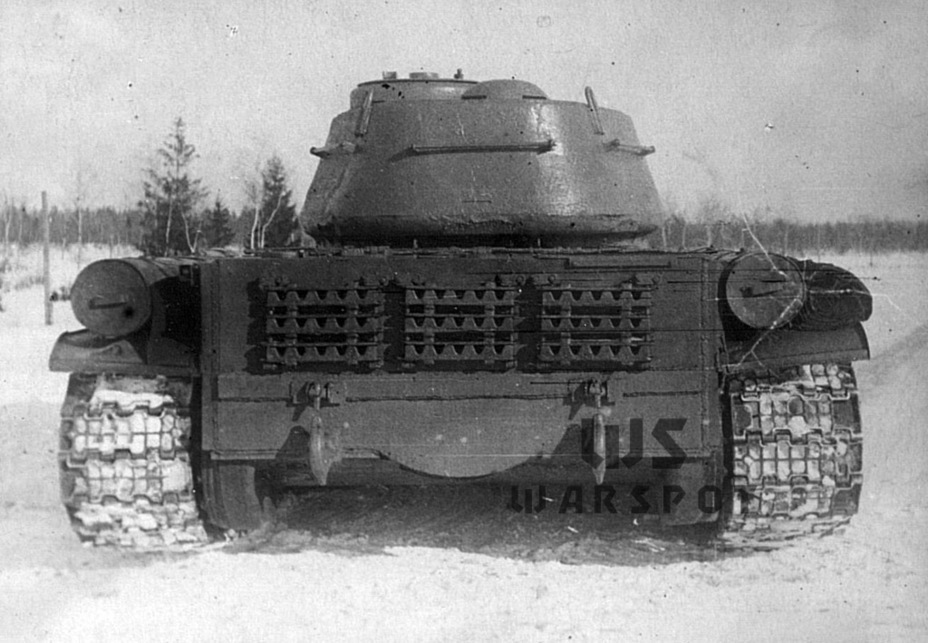
The tank drove for 387 km on a highway, 520 km on a dirt road, and 105 km off-road. The trials took place at the very end of winter and the weather did not make driving easy. Nevertheless, the tank reached a maximum speed of 52.6 kph. Testers indicated that in better conditions the top speed could be higher. The average speed on a snow covered highway was 35 kph and could have been even higher. The limiting factor was overheating of the oil system. The fuel expenditure was 208 L per 100 km. Due to difficult conditions, the average speed on dirt roads was lower, 16.1 kph. Fuel expenditure increased to 268 L per 100 km. Finally, the average speed off-road was 11.4 kph and the fuel expenditure was 520 L per 100 km. The cruising range in winter-spring conditions was 187, 145, and 73 km respectively.
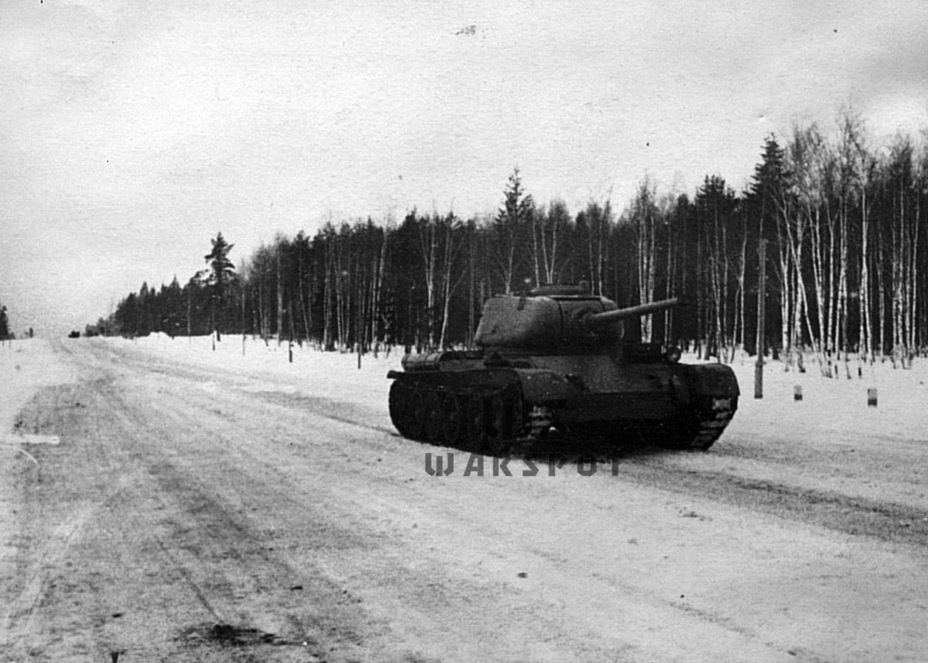
Difficult road conditions resulted in poor results during obstacle trials. The frozen ground covered in ice did not allow the tank to traverse even a 20 degree slope. With grousers the tank could climb a 25 degree slope, there was not enough traction for anything steeper. This was about equal to the T-34. The tank could tilt up to 15-16 degrees when driving at an incline before it started to slip. The effort required to drive the tank in difficult conditions increased to 25-30 kg.
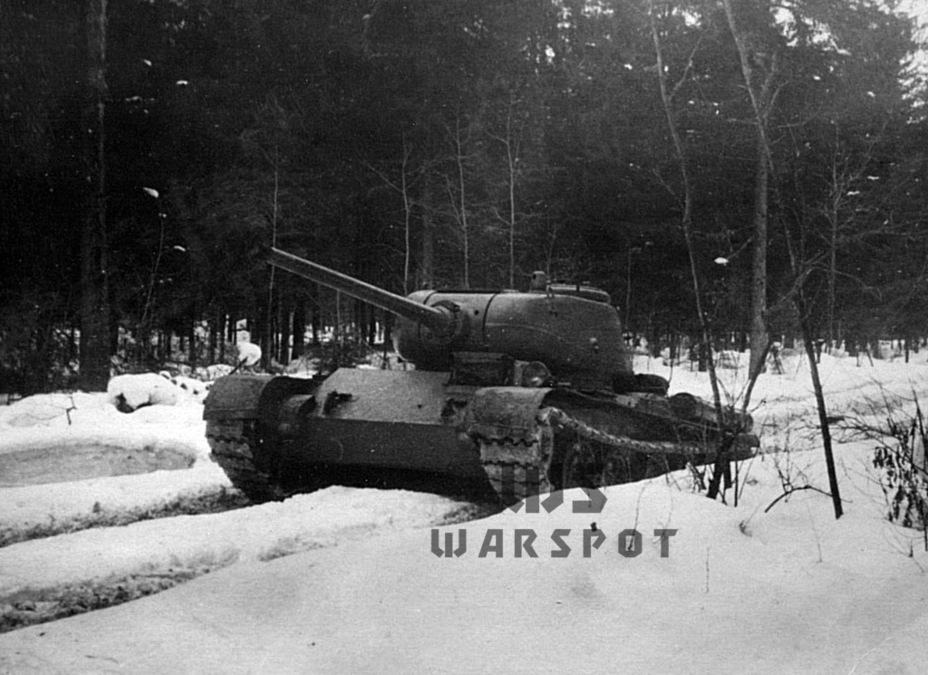
The NIBT proving grounds also measured the center of gravity of the tank. It turned out that it shifted backwards far enough to impact the tank's off-road mobility. There were also complaints about the cooling system. The air cooling of the engine and oil tank proved insufficient. Additionally, the oil tank was next to the exhaust system, which heated it up more. The oil temperature reached 110 degrees even in winter-spring conditions. There were also issues with the fan drive, which broke constantly. There were also complaints about the reliability of the gear train and final drives. The main issue of T-34 tanks, destruction of road wheel rims, was still present.
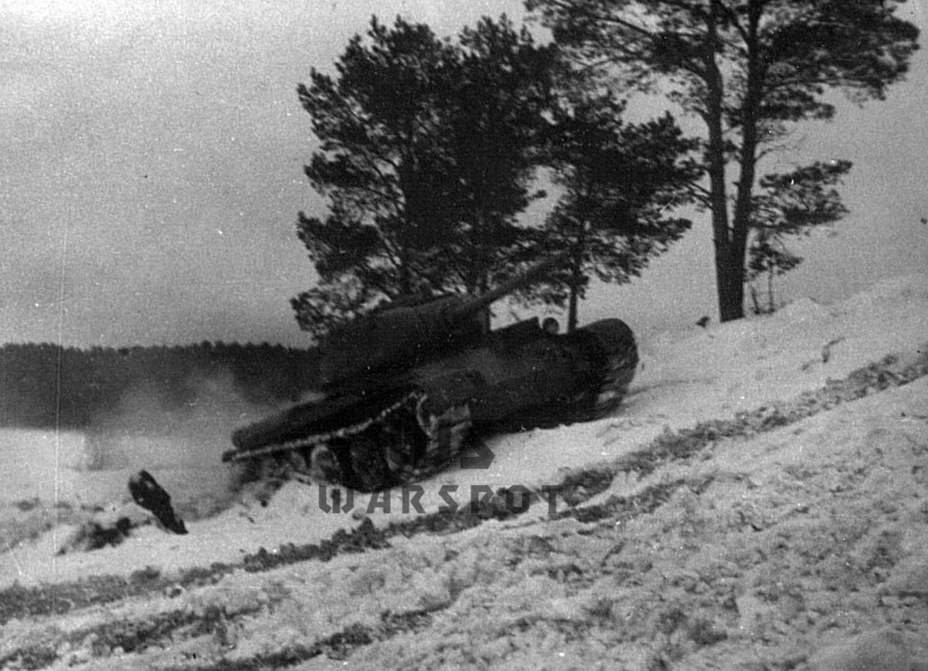
There were also complaints about the crew conditions in the T-44 tank. The commander's seat was too low and his observation was partially impeded by the gunner's periscope and fan cover. The gunner's seat was noticeably tilted to the left. There were also complaints about the electric turret traverse drive. The combination of the manual and powered turret traverse into one handle was considered suboptimal. The loader didn't have a seat. As for the driver, the improvement in observation was only partial. If all his hatches were closed, including the front observation port, then visibility radically decreased. The installation of a hull machine gun to the right of the driver was also a bad idea, since it got in the way of changing gears.
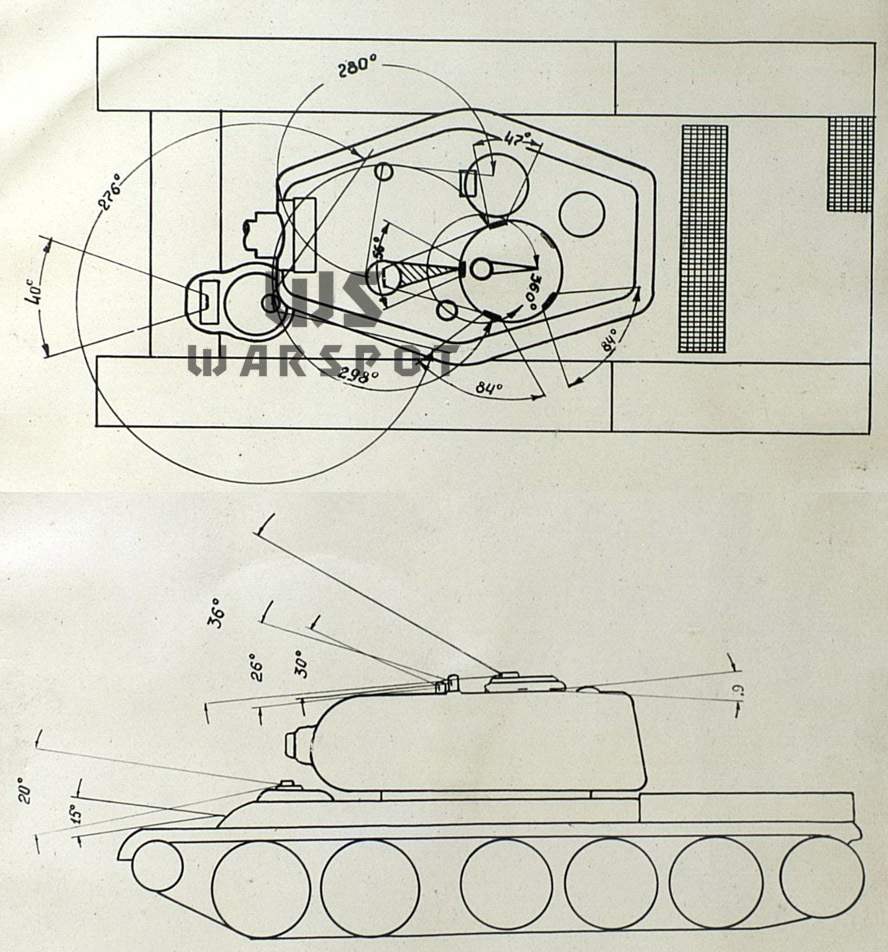
Gunnery trials were successful. The D-5T gun installed in the T-44 was very precise. The theoretical maximum rate of fire of 10 RPM was confirmed in practice. This rate of fire was achieved at the proving grounds. The aimed rate of fire was lower, 4-5 RPM. It was also mentioned that only the turret rack was convenient to use. It was hard to reach the rack in the front of the hull, although the T-34's floor racks were even harder to use.
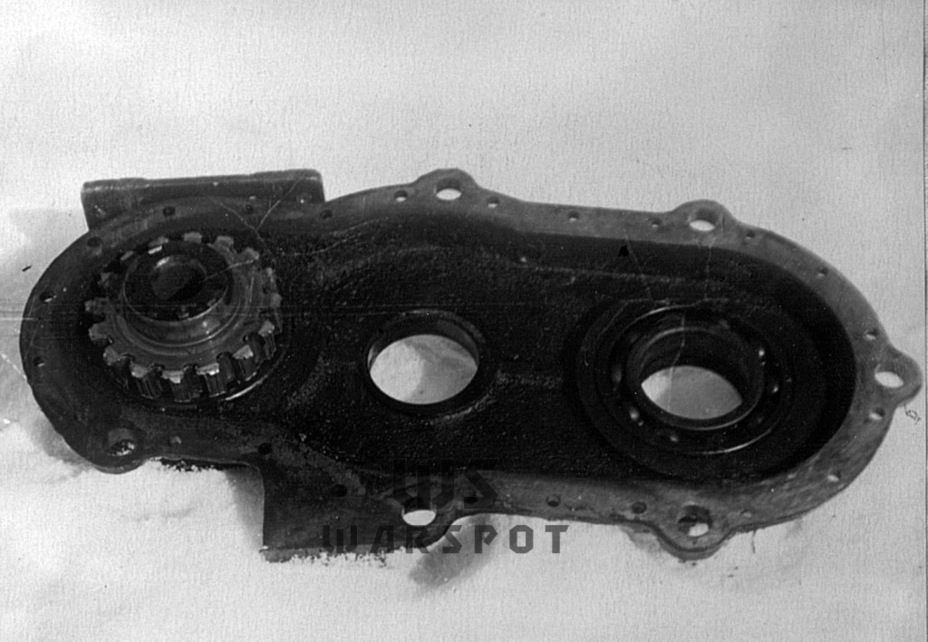
The conclusions were mixed. The commission made a large number of requests for changes, including the bulge underneath the engine compartment, as the prototype still didn't have a V-2-44 engine. Improvements of servicing procedures also had to be made. Nevertheless, the conclusions stated that the T-44 was superior to the T-34 tank. Due to the high level of interest in the vehicle, factory #183 was instructed to make the corrections within one month and present an improved tank for trials.
Away with the cabin
One of the main differences between the T-44 tank and its predecessors was that it went through serious trials. In addition to a larger amount of trials and an extra prototype sent to the NIBT proving grounds, the design of the hull was closely studied. For this purpose, factory #183 built another hull that went through penetration trials at the Ural Artillery Proving Grounds on April 4th-5th.
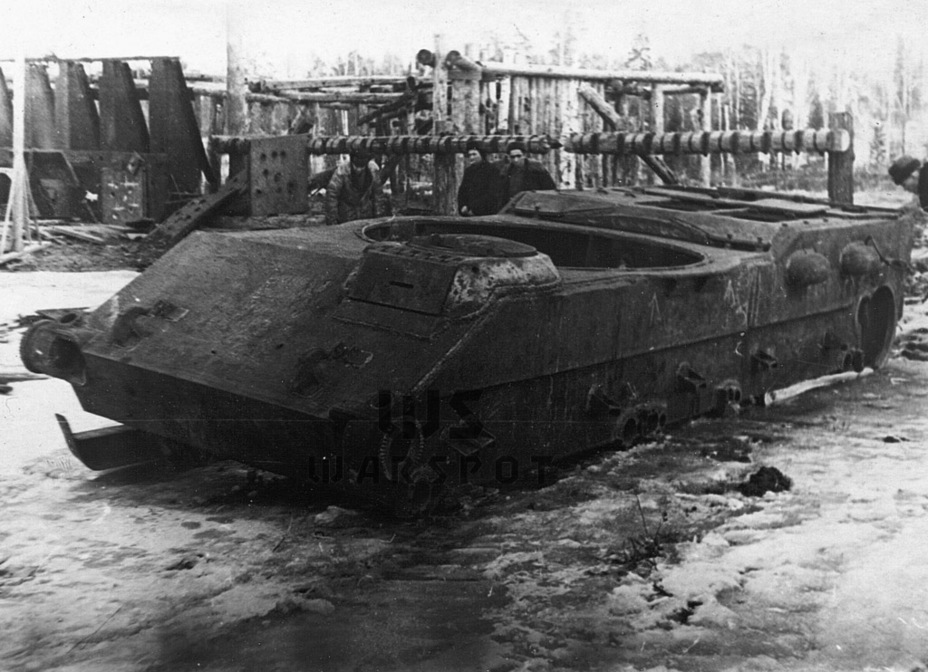
Such a high interest was caused by the tank's design peculiarities. As mentioned before, KB-520 claimed that it was immune to the 75 mm Pak 40 from the front. A claim is one thing, but reality is another. Since the tank had to replace the T-34-85, armour was an important issue. There was, however, one item that caused a lot of concern: the driver's cabin. The cabin forced an indentation in the turret front that was very vulnerable to enemy shells and was also not as strong as the rest of the hull itself. Its sides were 90 mm thick, but only cast. The front had a large observation hatch that was vulnerable to attack.
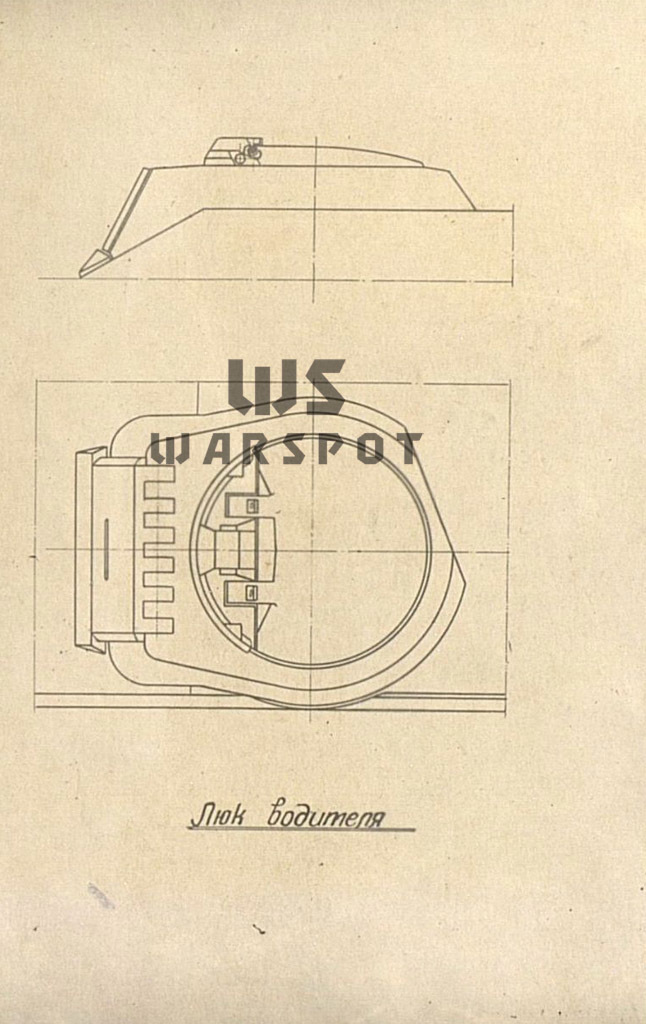
The Pak 40 was not used during trials. Domestic guns were used instead. 38 shots were fired from 50 meters, mostly from the 76 mm F-34 gun but also from the 85 mm 52-K AA gun. Each shot was recorded.
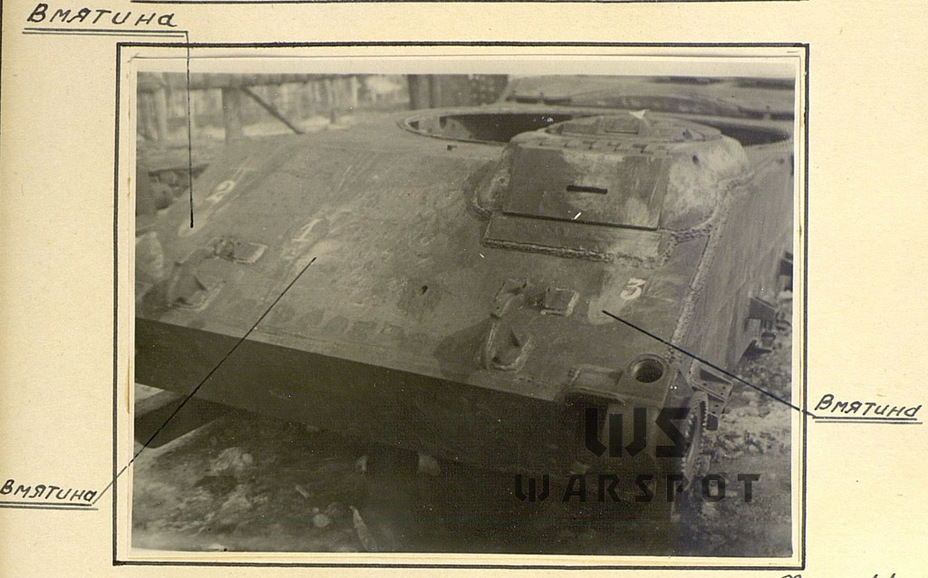
The front of the hull was fired upon first. Only dents formed at first, but cracks came soon after, especially after being hit with 85 mm rounds. The biggest issue was a hit to the driver's cabin. The first hit dislodged a 220×110 mm chunk and caused cracks in the welding seams. This meant that the driver would be killed with the first shot. Shooting at the observation port also ended poorly. The first hit made a 100×150 mm breach. The F-34 was weaker than the Pak 40, and yet factory #183 claimed that the hull was immune to the latter! The exposed idler carriers were another vulnerable spot.
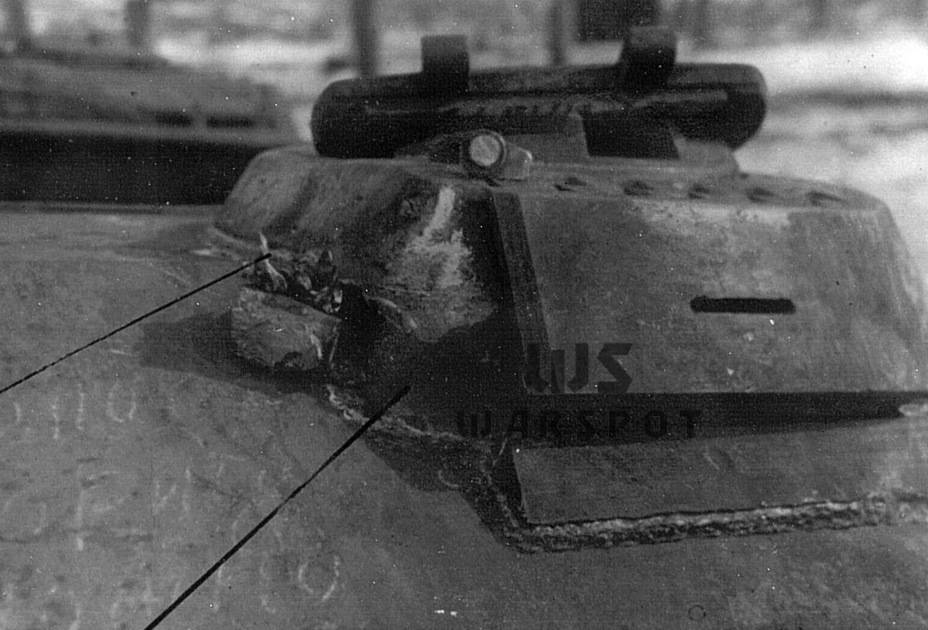
The side and rear were also shot at. The resistance of these components would clear be lesser. The sides could be penetrated with a 76 mm shell at normal. At an angle the story was different. The applique armour could withstand being hit at 60 degrees, but not for long. Cracks began forming in the welding seams. Nevertheless, they did their job.
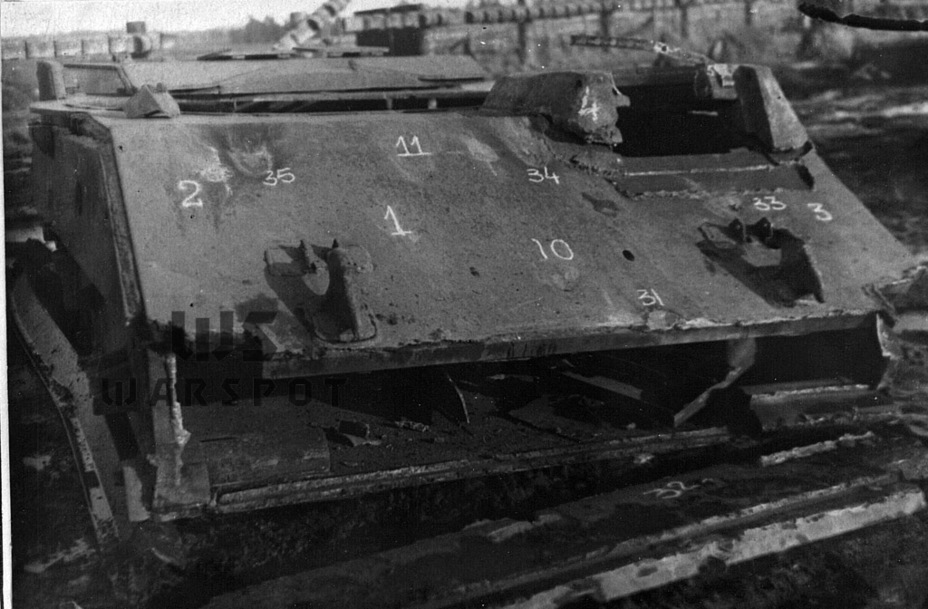
The commission concluded that the driver's cabin should be redesigned, if not removed fully. The slope of the lower front plate should be increased to the same angle as the upper plate. The idler carriers also had to be changed. Finally, the sides had to be made from one piece of steel, not several. This made them harder to produce, but also more resistant. All of these changes would be made to improved T-44 tanks built with the results of the proving grounds trials in mind. The T-44 had to be radically changed and the production timeline was pushed back. However, the decision to change the design was completely correct. The T-44 did make it into production, but it took more than one evolutionary step along the way.
Translated by Peter Samsonov. Read more interesting tank articles on his blog Tank Archives.






